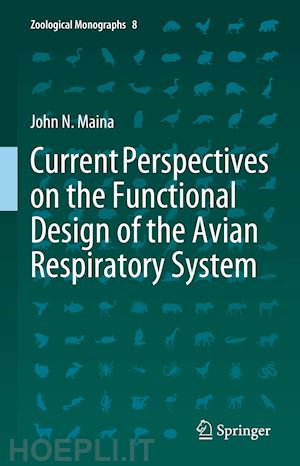
Questo prodotto usufruisce delle SPEDIZIONI GRATIS
selezionando l'opzione Corriere Veloce in fase di ordine.
Pagabile anche con Carta della cultura giovani e del merito, 18App Bonus Cultura e Carta del Docente
Birds have and continue to fascinate scientists and the general public. While the avian respiratory system has unremittingly been investigated for nearly five centuries, important aspects on its biology remain cryptic and controversial. In this book, resolving some of the contentious issues, developmental-, structural- and functional aspects of the avian lung-air sac system are particularized: it endeavors to answer following fundamental questions on the biology of birds: how, when and why did birds become what they are?
Flight is a unique form of locomotion. It considerably shaped the form and the essence of birds as animals. An exceptionally efficient respiratory system capacitated birds to procure the exceptionally large quantities of oxygen needed for powered (active) flight. Among the extant air-breathing vertebrates, comprising ~11,000 species, birds are the most species-rich-, numerically abundant- and extensively distributed animal taxon. After realizing volancy,they easily overcame geographical obstacles and extensively dispersed into various ecological niches where they underwent remarkable adaptive radiation. While the external morphology of birds is inconceivably uniform for such a considerably speciose taxon, contingent on among other attributes, lifestyle, habitat and phylogenetic level of development have foremost determined the novelties that are displayed by diverse species of birds.
Here, critical synthesizes of the most recent findings with the historical ones, evolution and behavior and development, structure and function of the exceptionally elaborate respiratory system of birds are detailed. The prominence of modern birds as a taxon in the Animal Kingdom is underscored. The book should appeal to researchers who are interested in evolutionary processes and how adaptive specializations correlate with biological physiognomies and exigencies, comparative biologists who focus on how various animals have solved respiratory pressures, people who study respiration in birds and other animals and ornithologists who love and enjoy birds for what they are – profoundly interesting animals.
Chapter 1. Fascinating Natural and Biological Traits of Birds.- Chapter 2. Development of the Avian Respiratory System.- Chapter 3. Structure of the Avian Respiratory System.- Chapter 4. Function of the Avian Respiratory System.
Achieving a BVM from the University of Nairobi (Kenya) and PhD and DVSc from the University of Liverpool (UK), John N. Maina has served as a professor of veterinary anatomy at the University of Nairobi and of human anatomy at the University of the Witwatersrand (South Africa). He currently holds a position of Research Professor of Zoology at the University of Johannesburg. He has extensively comparatively investigated the functional designs of gas exchangers, mainly the lung-air sac system of birds and the bronchioalveolar lung of bats (Chiroptera). He has considerably published on the subject.











Il sito utilizza cookie ed altri strumenti di tracciamento che raccolgono informazioni dal dispositivo dell’utente. Oltre ai cookie tecnici ed analitici aggregati, strettamente necessari per il funzionamento di questo sito web, previo consenso dell’utente possono essere installati cookie di profilazione e marketing e cookie dei social media. Cliccando su “Accetto tutti i cookie” saranno attivate tutte le categorie di cookie. Per accettare solo deterninate categorie di cookie, cliccare invece su “Impostazioni cookie”. Chiudendo il banner o continuando a navigare saranno installati solo cookie tecnici. Per maggiori dettagli, consultare la Cookie Policy.